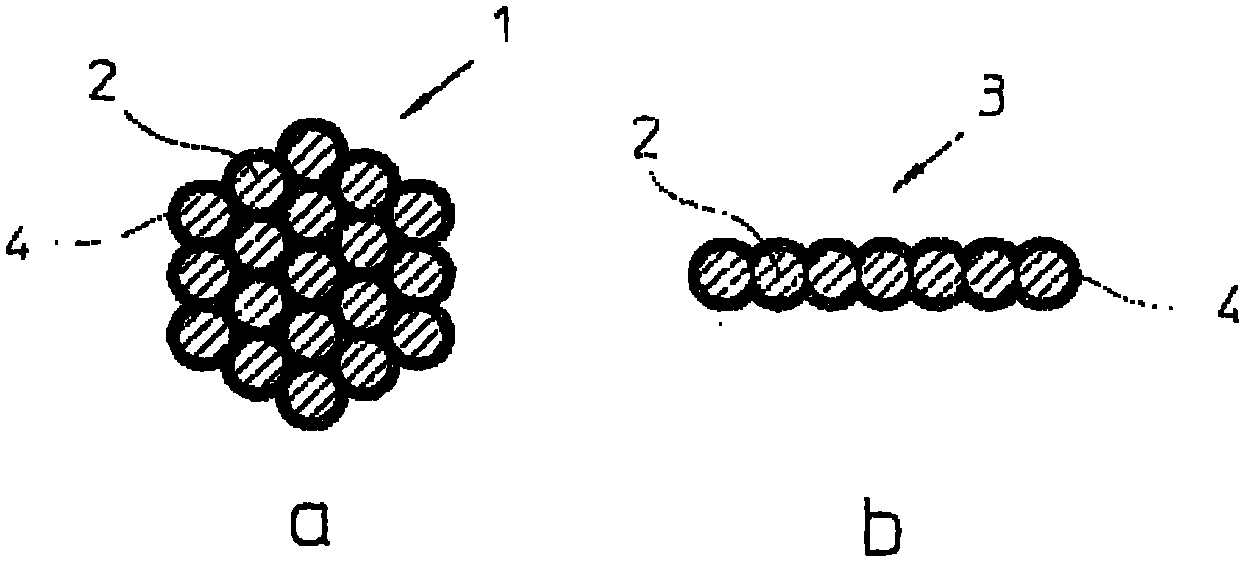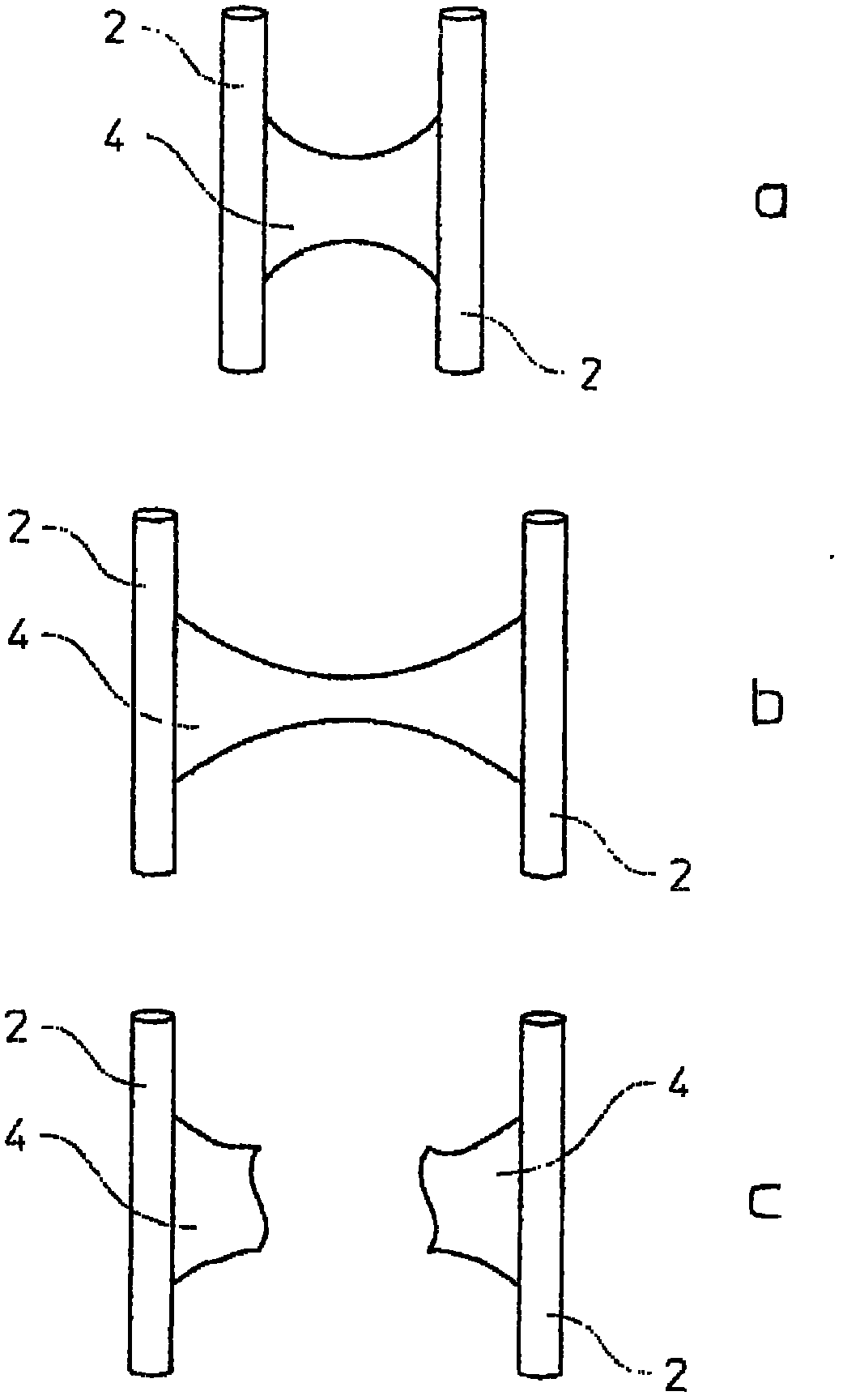Method for production of a multi-axial wire structure, unidirectional fiber layers and method for production thereof, multi-axial wire structure and composite part with a matrix
A unidirectional fiber, multiaxial technology, used in textiles and papermaking, conveying filamentous materials, coatings, etc., to solve problems such as violations, length differences and stress differences
- Summary
- Abstract
- Description
- Claims
- Application Information
AI Technical Summary
Problems solved by technology
Method used
Image
Examples
Embodiment Construction
[0041] exist figure 1 A very schematic cross-sectional representation of an individual fiber 1 , which may be a carbon fiber, is shown in sub-figure a of . Fibers (often also called yarns, cables or monofilament cables) consist of a large number of monofilaments 2 . In the context of interest here, carbon fibers 1 with a K value of from 12 to 50 and greater, ie carbon fibers consisting of 12,000 to 50,000 individual filaments 2 and more, are possible. For economical reasons thinner fabrics of unidirectional yarns are produced, wherein fibers 1 are extracted as raw material according to the partial diagram a and widened in a spreading device. The fibers of the raw material do not necessarily have a polygonal or approximately circular cross-section as shown here. Common commercial forms also use fiber strips which already have an approximately rectangular flattened cross-section, but are still too thick for practical use and therefore likewise have to be widened.
[0042] De...
PUM
| Property | Measurement | Unit |
|---|---|---|
| width | aaaaa | aaaaa |
| width | aaaaa | aaaaa |
Abstract
Description
Claims
Application Information
 Login to View More
Login to View More - R&D
- Intellectual Property
- Life Sciences
- Materials
- Tech Scout
- Unparalleled Data Quality
- Higher Quality Content
- 60% Fewer Hallucinations
Browse by: Latest US Patents, China's latest patents, Technical Efficacy Thesaurus, Application Domain, Technology Topic, Popular Technical Reports.
© 2025 PatSnap. All rights reserved.Legal|Privacy policy|Modern Slavery Act Transparency Statement|Sitemap|About US| Contact US: help@patsnap.com



